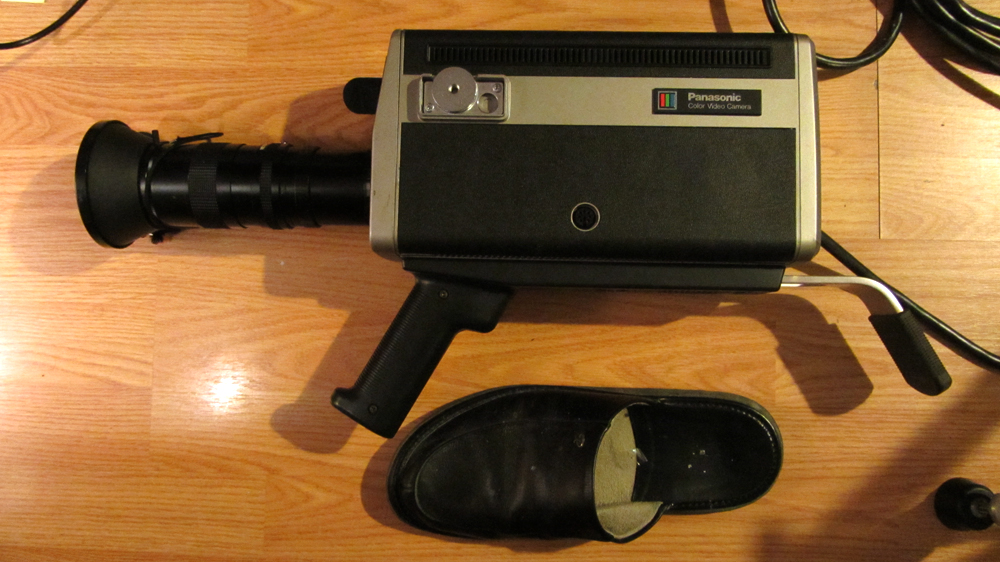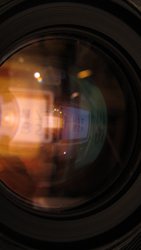BSV 1172 Update: Nearing Completion

Sorry for the long delay between posts. Completing some long-dormant aspects of BSV 1172 also resulted in my addressing some tech issues that can best be described as ‘How the heck am I going to do that?’
Before I get into a short progress report, just a head’s up my other short, Liquid Puppetry (2014) is being screened tonight at the PlāYR Video Festival in Newmarket. My schedule’s so nuts I won’t be able to make it, but it should be a fun screening for the audience.
Now then.

BSV 1172’s almost done, which is quite a shift given it was in stasis for a long, long time (and unnecessarily so). Right now the film is close to being fine cut, the crackhead main title sequence is pretty much done, and what’s left is sound design and end credits. Sound is the main priority, as the film has to make TIFF’s May 29th deadline in its best possible form.
I’ve axed one sequence, and some scene shifting has helped the pacing in the first half, but there’s the finale that still bugs me – it works, but it needs a bang, and the issue is whether by the 16 minute mark viewers are ready for a wrap up, or would welcome one more visual sequence before the finale and end credits.
I can’t slap together scenes and present them as being ‘intentional’ because pacing and structure are really important to me. A friend (and great artist) always points out the importance of flow in a graphic panel – whether in a poster, comic book or comic strip – and in my mind flow correlates with pacing: things have to move along with images & sounds timed in a way that’s natural.
Taking the main title sequence as an example, it could be longer, but I also like the axiom of ‘less is more’ because while more things can look pretty, they can also be boring, especially if there’s repetition of material. The tough part is to be aware of dull spots when you keep going over material and refining it, trimming what’s necessary but not truncating something that really needed a few extra frames.
I’ll post a confirmation of the doc’s completion for TIFF at the end of the month (which is just 2 weeks away), but the other challenge this past weekend was getting an older iMac upgraded so it’s a working editing machine, and Final Cut Pro 7 and 10 friendly.
I was intending to use it to edit a performance I taped last summer, but upgrading the iMac didn’t happen until this past weekend – over $200 when RAM and HD are factored in – so it may end up being completed in Premiere. We’ll see how things go in the coming weeks.
For the curious, I’ve snipped this from a personal post to illustrate the differences between swapping drives in a generic PC desktop (or even laptop for that matter) versus the gorgeous yet challenging iMac:
After removing 1 screw, gently (read: carefully) apply a suction device from Canadian Tire (called a “dent puller,” available in the auto parts dept.) to remove the magnetically held glass plate.
Remove 14 specialty screws, then take off outer cover after unplugging mic.
Remove 8 specialty screws, unplug monitor after unscrewing 2 specialty screws, unplug 5 monitor power plugs and then gently set aside monitor.
Remove foam piece + separate foam cover from HD and peel off cover & temperature sensor from surface of HD. Pinch flap covering HD bolts and angle up, freeing HD. Pull HD forward and up, angling to left, pinch off power & SATA cable, and HD is free.
Transfer four bolts to new HD + small foam pad and re-insert into housing. Place temperature sensor on new HD with foam cover, and work backwards, screwing and plugging everything back into place.
Make sure all cables & screws & foam are where they should be, and use a lens blower to clean off dust from monitor before replacing glass screen. Use gentle cloth to wipe away suction imprint, and you’re done.
For a standard (er, my own) desktop PC:
Unscrew one bolt and peel away side panel. Pull off front plastic face-plate. Unplug power and SATA cable from HD, undo 1-2 screws, and remove. Swap in place new HD and replug / fasten aforementioned.
Done.
For the iMac, I carefully followed the following video and text page from ifixit.com, as each one lacked some details from the other, but together were extremely helpful in covering the risqué stages to get the job done:
The responsibility for doing and risking potential damage is on you – it’s a precarious operation if you’re not doing it in some brightly lit clean room with expert tools and steady hands – but for myself, the processes outlined in the video + website worked, so a big thanks to ifixit.com for helping me enable the iMac’s physical transformation from generic personal machine (320 GB HD + 2GB RAM) to editing machine that’s Final Cut Pro friendly (2TB HD + 8 GB RAM).
In an upcoming post I’ll also detail connecting older Firewire devices to the iMac, including a generic Canon camera, a Sony GV-D1000 miniDV recorder / player, and a Laird Telemedia LTM-5500 bi-directional media converter.
FCP 10 actually recognizes the Laird and enables video capture, but FCP just won’t see it, so that’s another tech issue to solve. I’ll post results, as there are probably several Mac & PC users curious about some of the vintage gear floating around Ebay which was designed for prosumer and broadcast usage and allows editors to bounce footage between digital and analogue camps.
The Laird’s biggest headache is that it only accepts balanced audio, meaning the unbalanced audio from consumer products – VCRs, cameras, CDs, etc. – will be too low, and require boosting before they’re inputted into the unit.
See you end of May,
Mark R. Hasan, Editor
Big Head Amusements
